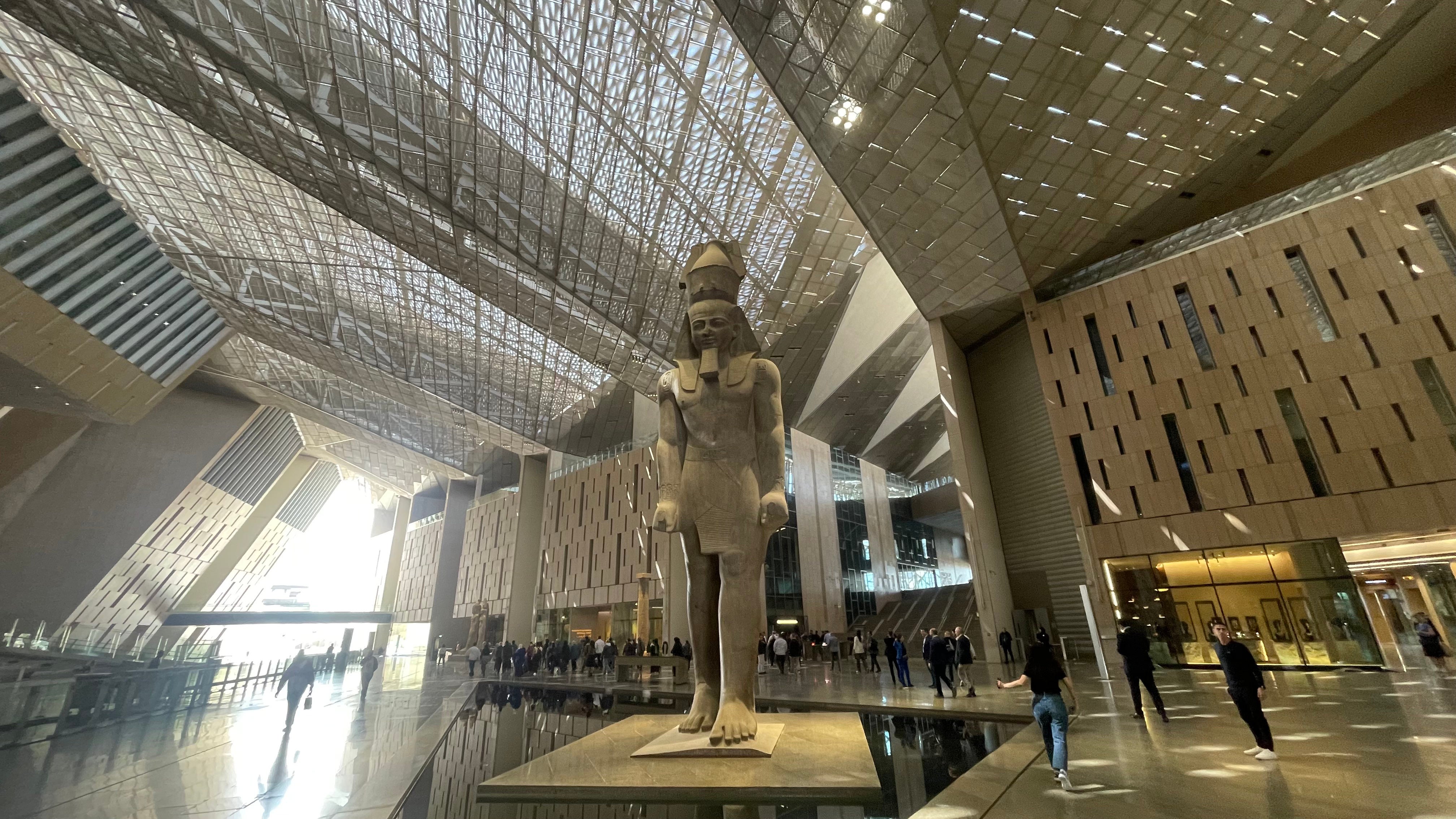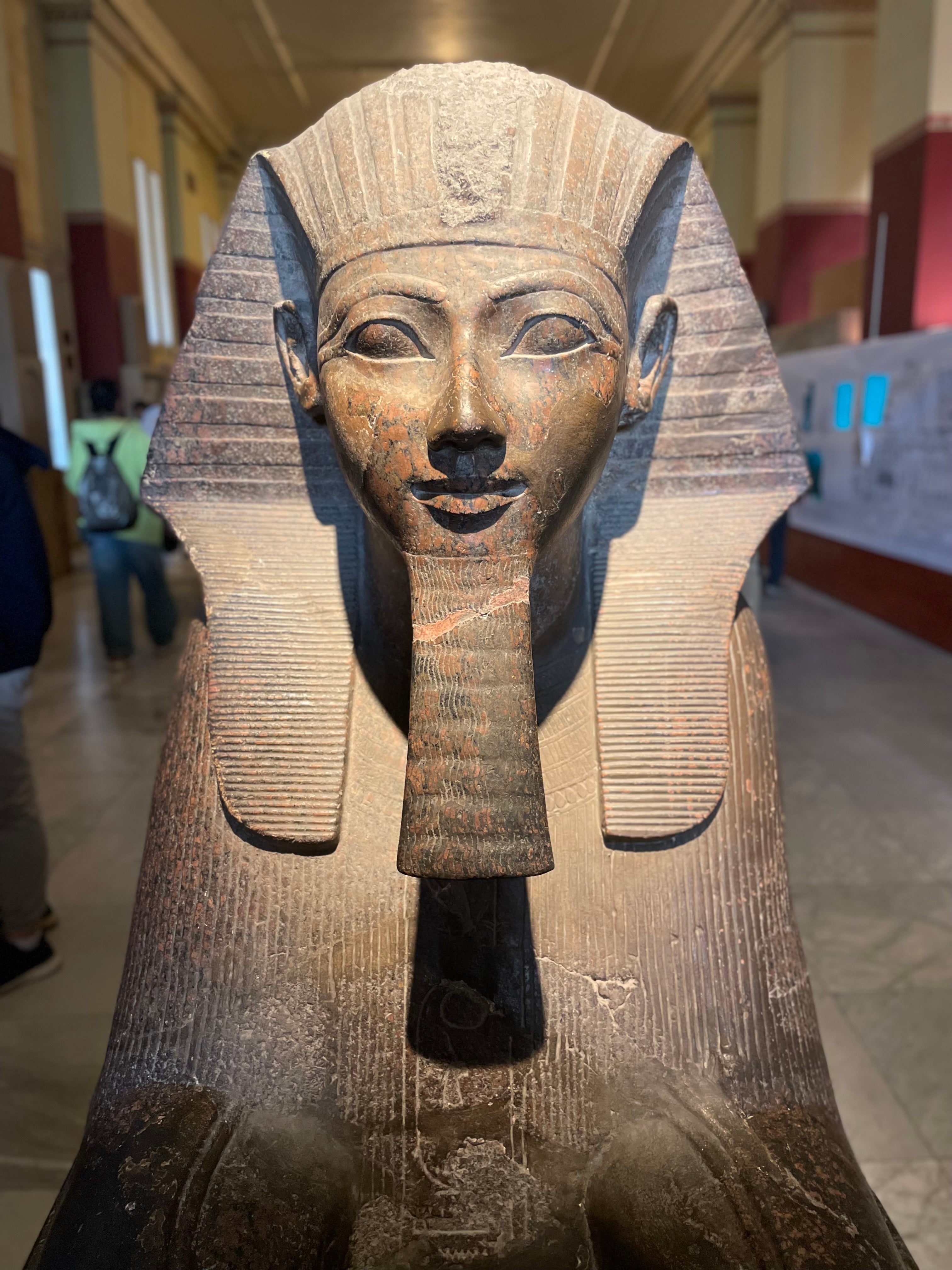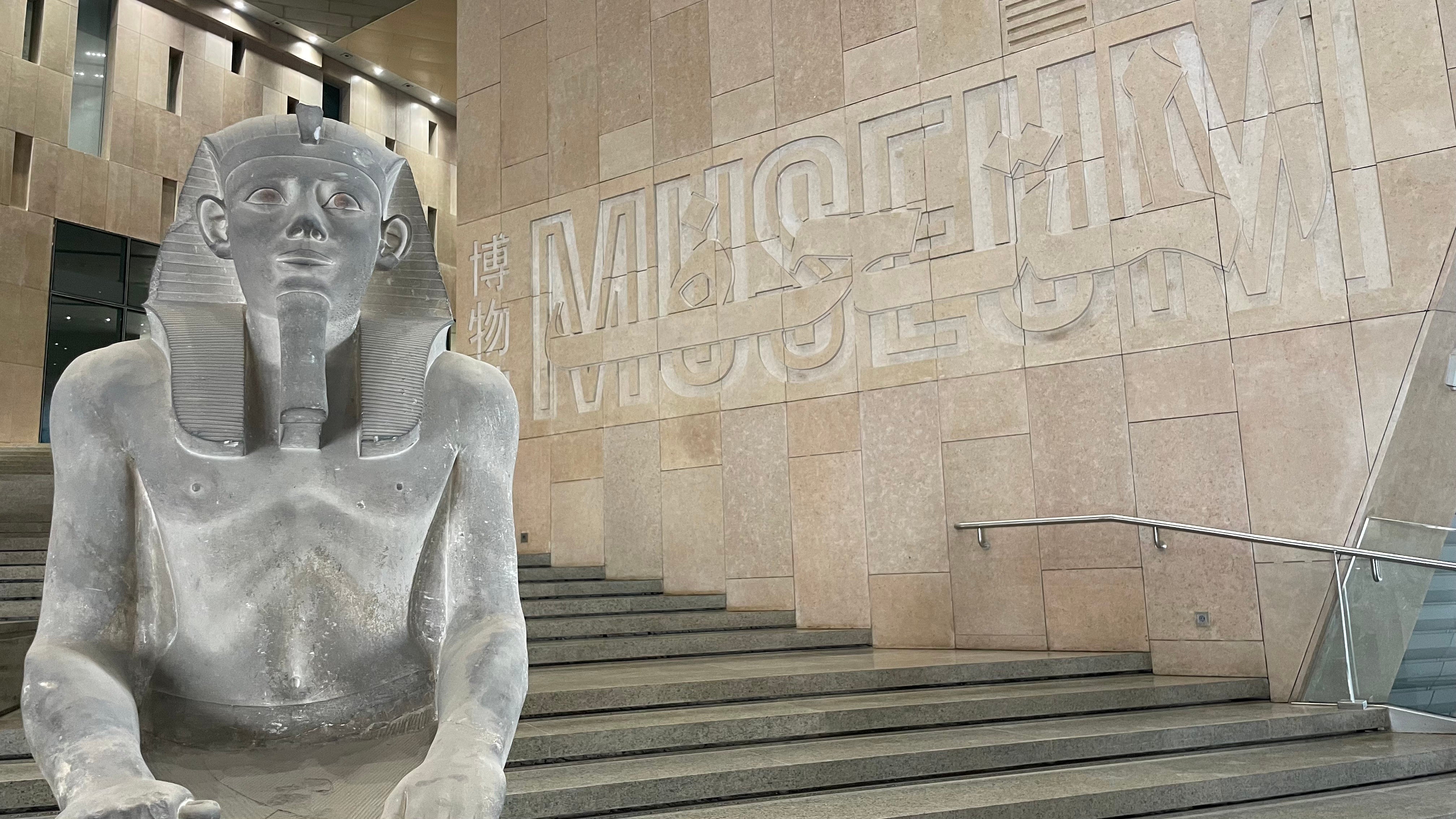The Independent's journalism is supported by our readers. When you purchase through links on our site, we may earn commission.
A first look inside world’s largest museum – with 22 mummies and an Indiana Jones moment
The 120-acre site of the long-delayed but highly-anticipated £1 billion Japanese-funded Great Egyptian Museum
Your support helps us to tell the story
From reproductive rights to climate change to Big Tech, The Independent is on the ground when the story is developing. Whether it's investigating the financials of Elon Musk's pro-Trump PAC or producing our latest documentary, 'The A Word', which shines a light on the American women fighting for reproductive rights, we know how important it is to parse out the facts from the messaging.
At such a critical moment in US history, we need reporters on the ground. Your donation allows us to keep sending journalists to speak to both sides of the story.
The Independent is trusted by Americans across the entire political spectrum. And unlike many other quality news outlets, we choose not to lock Americans out of our reporting and analysis with paywalls. We believe quality journalism should be available to everyone, paid for by those who can afford it.
Your support makes all the difference.“The more you know about them, the more besotted you get.”
Egypt’s deputy minister of tourism is gazing across the plateau of Giza as he describes the unforgettable sight of the Great Pyramid, proudly pushing out of the desert in front of him.
Dark shadows of clouds climb up the sandy sides, only to roll off again, leaving the pyramids shining in the same vibrant yellow as the sand which lies all around, dominating the horizon as they point to the heavens above.

A smile stretching his cheeks wide, Mohamed Salama runs through some of the massively ambitious plans to transform Cairo’s tourism, including the opening of the Great Egyptian Museum.
We are sharing an Egyptian mixed grill lunch at the 9 Pyramids restaurant, camouflaged into the Giza desert plateau and overlooking one of the world’s most famous landmarks.
Out of sight, on the northern side of the pyramids and the sphinx, is the 120-acre site of the long-delayed but highly-anticipated £1 billion Japanese-funded museum – the largest archaeological museum in the world with 872,000 square-feet of floorspace.
It will be home to 100,000 artefacts, including 5,398 items from the legendary Tutankhamun collection, featuring highlights such as the iconic death mask of the boy king as well as his golden throne.
More than 100 years since the world was gripped by the excavations of British archaeologist Howard Carter, who uncovered one of the greatest historical discoveries, Egypt is preparing a final resting place worthy of the legendary king’s possessions.
The roof of the sand-coloured compound slopes down to earth like a ray of sunlight from the sky, which is interrupted by a pyramid of dark stone that acts as the grand entrance to the museum.
How to plan your trip
Flights
EasyJet (easyjet.com) flies from London Luton to Sphinx Airport up to three days a week throughout the year with prices starting from £139pp return (including taxes).
EasyJet holidays offers three nights at the Waldorf Astoria Cairo Heliopolis (room only) from £780pp including 23kg of luggage per person and flights from London Gatwick on April 27, 2024. Tours and activities can be booked through Musement.
Once inside, I am greeted in the luxuriously vast lobby by the 3,200-year-old statue of Ramses II – at 11 metres, it’s so tall that it had to be installed when the site was still a pile of sand, and the museum was then built around it.
Although the opening date for the museum still has not been confirmed, I have been invited by easyJet Holidays to have a sneak preview of what the Egyptian tourist authority is promising to be one of the best historical collections in the world.
The visit starts with a 360-degree immersive cinema experience, which pulls us back in time and into the legend of King Tut, taking us on a virtual journey to the Valley of the Kings and into his tomb, which is recreated in the vibrant yellows, reds and greens of the original hieroglyphics – as fresh as the day they were originally painted for his death in 1323BC.
Afterwards, I return to the lobby to begin the ascent of the Grand Staircase, which echoes a side of the pyramids which were designed as a pathway to the heavens for the god kings buried in their lavish tombs inside.

At every stage as I ascend, I am met by an array of statues, sarcophagi and tablets, which tell the story of the kings and queens of Egypt, before I reach the final level depicting the ages-old aim of all the kings – eternity.
Here is the entrance to the gallery dedicated to Tutankhamen – whose name will surely live forever – and a giant window providing an awe-inspiring view of the three main pyramids of Giza on the horizon.
Unfortunately this is where the visit ends at present until an opening date is finally announced, currently thought to be later this year. Delays have been caused by the Covid-19 pandemic, the Arab Spring crisis in 2011, and now it appears that the Israel-Gaza war has had a further impact on the opening date.
However, before I leave the museum, archaeologist Tarek Sarhan reveals one last secret.
A small window has been created above the entrance to allow a ray of sun to shine directly on to the giant Ramses II statue twice a year, in the same way that the ancients designed his tomb for a ray to shine on the faces of the Holiest of Holies along the back wall.
This will next happen on October 22 – could this scene fit for an Indiana Jones movie be the moment the museum is finally opened?
Eager to set my eyes on the Tutankhamen artefacts, Tarek takes me to their current home in the Egyptian Museum in Cairo, which still has the faded charm of the colonial era of when it was established in 1902.
With its thousands of dusty exhibits scattered around the many halls and galleries, the museum has the atmosphere of a warehouse more than an exhibition giving me the feeling that I am making the discoveries for myself.
To enter the Tutankhamen room, I jostle with an impatient queue before finally squeezing into the darkened gallery, with warning cries of ‘No photo’ and ‘Keep moving’ being bellowed repeatedly by the museum guards. But even the cramped and boisterous conditions cannot dampen the shining glory of the death mask, famous to the world but whose impact and beauty can only be felt in person. Soon, these treasures will be transferred to the pristine new museum, leaving the chaos and dust behind.
The Egyptian tourist authority is putting in place widespread plans to make the new museum and the pyramids with the Sphinx more accessible, with a new airport opened nearby and a 18-lane motorway linking the city. But it is also attempting to rejuvenate the city itself with the creation of a lake and park surrounding the recently opened National Museum of Egyptian Civilisation, which is home to the Mummies Hall.

The 22 mummies, including 18 kings and four queens, were transferred in April 2021 from the old museum in a procession accompanied with enormous pomp and circumstance through the city’s streets.
Not that it is only these newly-built attractions that make Cairo a must-see, rather a pit-stop on the way to the other main shows in Luxor and Abu Simbel. Tarek also shows me, according to legend, the resting place of Jesus and the Virgin Mary during their exile as they fled from King Herod at the Coptic Church of Saints Sergius and Bacchus.
And this is next door to the Ben Ezra Synagogue, which is on the site where the baby Moses was found on the Nile, although the river has long retreated from this area.
Tarek also takes me to the beautiful Sultan Hassan and El Refai mosques and the impressive Mohamed Ali Mosque in the Citadel of Salah El Din, which dominates the skyline of the bustling city.
As dusty and intimidating as the city might be, which is unfathomably home to 25 million people, it is not difficult to find oases of calm – such as the Waldorf Astoria Heliopolis Hotel where I am staying.
Its spacious atrium, tall enough to incorporate several palm trees, acts as a welcome and peaceful barrier to the incessant horn-beeping of the clogged roads beyond.
And as the city buildings are modernising, it seems that the sense of customer service is also catching up.
Egyptians have been much-maligned for their hard-sell techniques, but as I walk through the streets of the Khan el-Khalili bazaar, I am only greeted with smiles and nothing more pushy than the jokey slogan parroted by the sellers: “How can I take your money from you today?”
It is this growing sense of the importance of tourism, plus increasing demand for the other Egyptian destinations of Hurghada and Sharm el Sheikh, that led easyJet to launch last October a new year-round three-times a week flight to the new Cairo Sphinx airport from London Luton flying Tuesdays, Thursdays and Saturdays.
And as I head home after a long weekend stay, the minister’s words echo in my head – and I realise that I too have become besotted by the legend of the pyramids.

Join our commenting forum
Join thought-provoking conversations, follow other Independent readers and see their replies
Comments